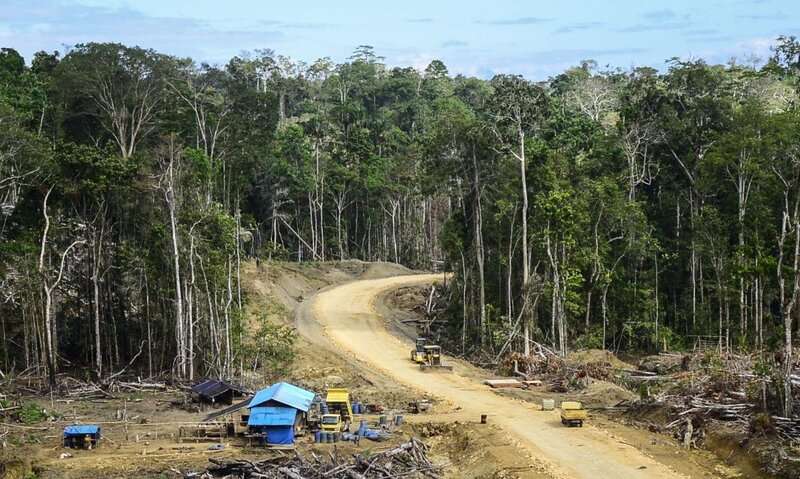The relationships between forests, deforestation and infectious disease emergence
by Science X staff
The global COVID-19 pandemic has shed light on the importance of certain previously little-studied scientific areas such as the relationships between ecosystems, their biodiversity and the emergence of new infectious diseases. Humans are making increasing use of their environment and so they are more exposed to certain microbes lurking in the shadows, a situation that may heighten the risk of new types of infection. Researchers from INRAE, CIRAD, IRD and the Pasteur Institute of French Guyana recently published in Environmental Research Letters a systematic literature review, using bibliometrics, of some 565 papers published between 1953 and 2018 on the relationships between forests, deforestation and emerging infectious diseases and noted just how scarce information on this major issue is.
The SARS-CoV-2 virus responsible for the current COVID-19 pandemic affecting the entire globe seems to have come about from a probable recombination of viruses from two different animal species, one of which is subject to illegal hunting or trade. So, as with numerous other emerging diseases that affect humans, this is a zoonosis, i.e. an infection of animal origin. In intertropical zones which are home to a wide concentration of biological diversity and where societies are still very vulnerable, some human populations are now faced with new health threats from wildlife. By cutting down trees to develop crop and livestock farming, those same communities come into contact with the microbial cycles found in large-scale forest biomes.
For all those reasons, researchers analysed 565 scientific papers that used the terms "forest," "deforestation" and "emerging infectious disease" in their titles and abstracts. They found that only 165 of them actually dealt with the relationships between forests, deforestation and emerging diseases that could provide useful information to the current debate. But how to account for such a gap? The scientists then studied the results in greater detail and concluded that a very large number of the papers actually dealt with an often tiny portion of the infectious cycle, i.e. solely with vector insects or reservoir animals, but much less frequently with their interactions with viruses, bacteria or protozoa. In addition, the vast majority of the articles did not discuss any connections with human cases. In the end, the topic of "forests, deforestation and emerging diseases" was rarely broached, even if a large number of papers stated that in their titles or abstracts. These researchers also noted a taxonomic bias in the articles since a large number of papers had to do with Lyme disease or cutaneous leishmaniasis. Most also referred to work in North America and in Central or South America.
This type of analytical review, now called "research on research," is vital to getting an objective, fact-based overview to guide research in the best way possible. The example discussed here really illustrates the importance of this type of study and highlights the fact that most studies still deal with complex topics in a very sectoral manner even when they have an initial OneHealth approach. Above and beyond that, this study demonstrates the need to broaden our knowledge of the emergence of human infectious diseases and their transmission by taking better account of environmental, and even, anthropological-sociological, economic and political components.
More information: Jean-Francois Guégan et al. Forests and emerging infectious diseases: unleashing the beast within, Environmental Research Letters (2020). DOI: 10.1088/1748-9326/ab8dd7
Journal information: Environmental Research Letters
Provided by Institut de Recherche pour le Développement (IRD)